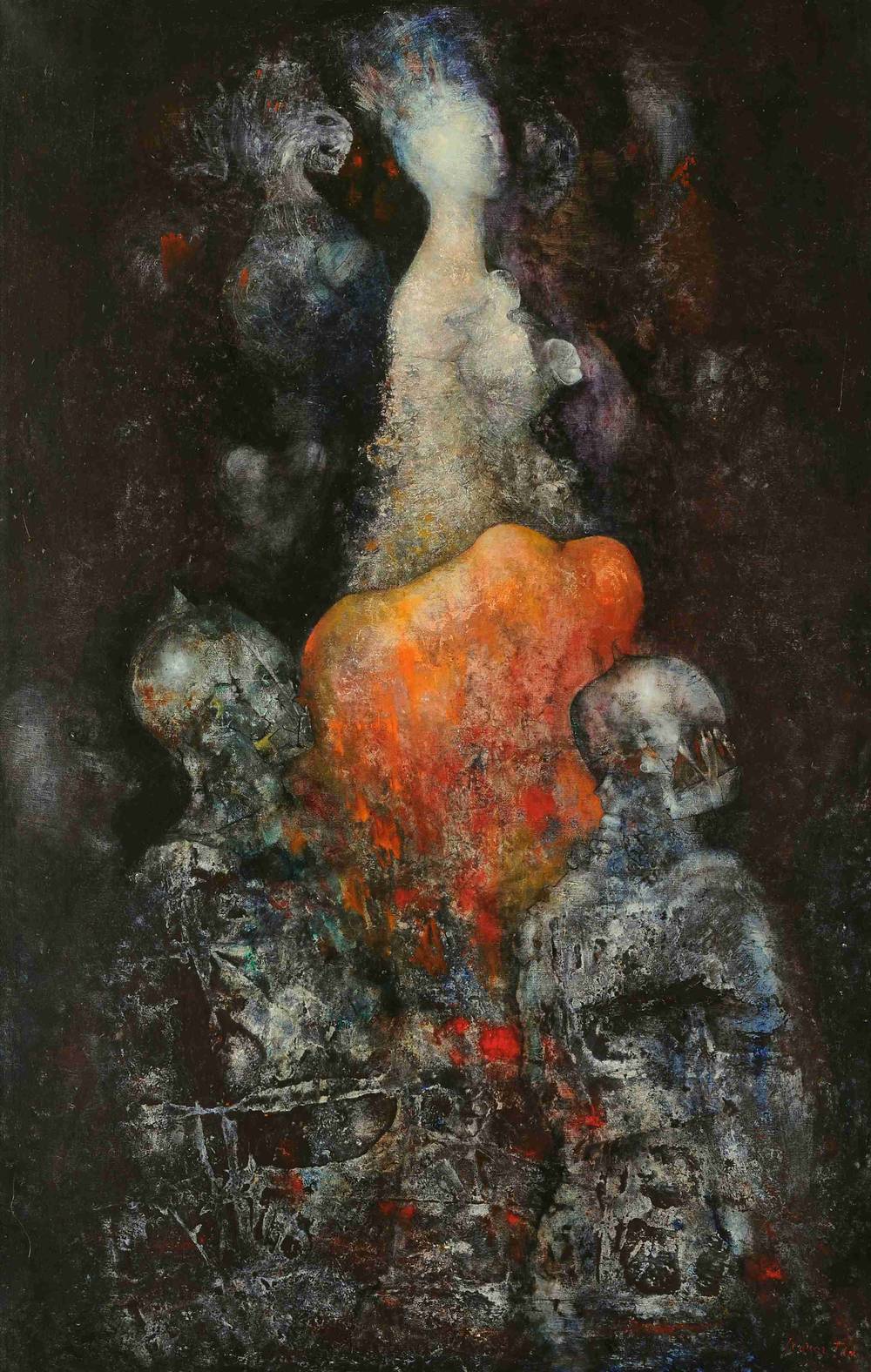In her art, Leonor Fini created a new social order, populated by sphinxes and militant heroines. And was inspired by numerous historical influences.
Leonor Fini (1907-1996) was once described by her New York gallerist Julian Levy as “(…) not a beautiful woman; her parts did not fit well together: head of a lioness, mind of a man, bust of a woman, torso of a child, grace of an angel and discourse of the devil…her allure was an ability to dominate her misfitted parts so that they merged into whatever shape her fantasy wished to present from one moment to the next”.
While Levy’s words may reflect the crucial role he played in promoting a new Surrealist ‘type’ to American audiences in the 1930 and ‘40s, it also reminds us of the role of women within that typology: she was invariably fashioned as the exotic and animalistic femme fatale. Whether a model, muse or artist she was expected to embody the essence of Surrealism – fantasy. However, female surrealists were quick to steer this gendering of fantasy towards their own independent expression and to fashion a new iconography which spoke to the idea of a modern, sexually liberated, woman.
The women surrealists developed a new, liberated visual language
Born in Buenos Aires as a child of Italian and Slav parents and brought up in Trieste in the circle of James Joyce and Rainer Maria Rilke, Fini turned to numerous historical sources for inspiration as she mastered her own artistic style and iconography. In her work she took inspiration from a range of artists – from Hieronymus Bosch and the Italian Mannerist Agnolo Bronzino to Gustav Klimt, Egon Schiele and Giorgio de Chirico.
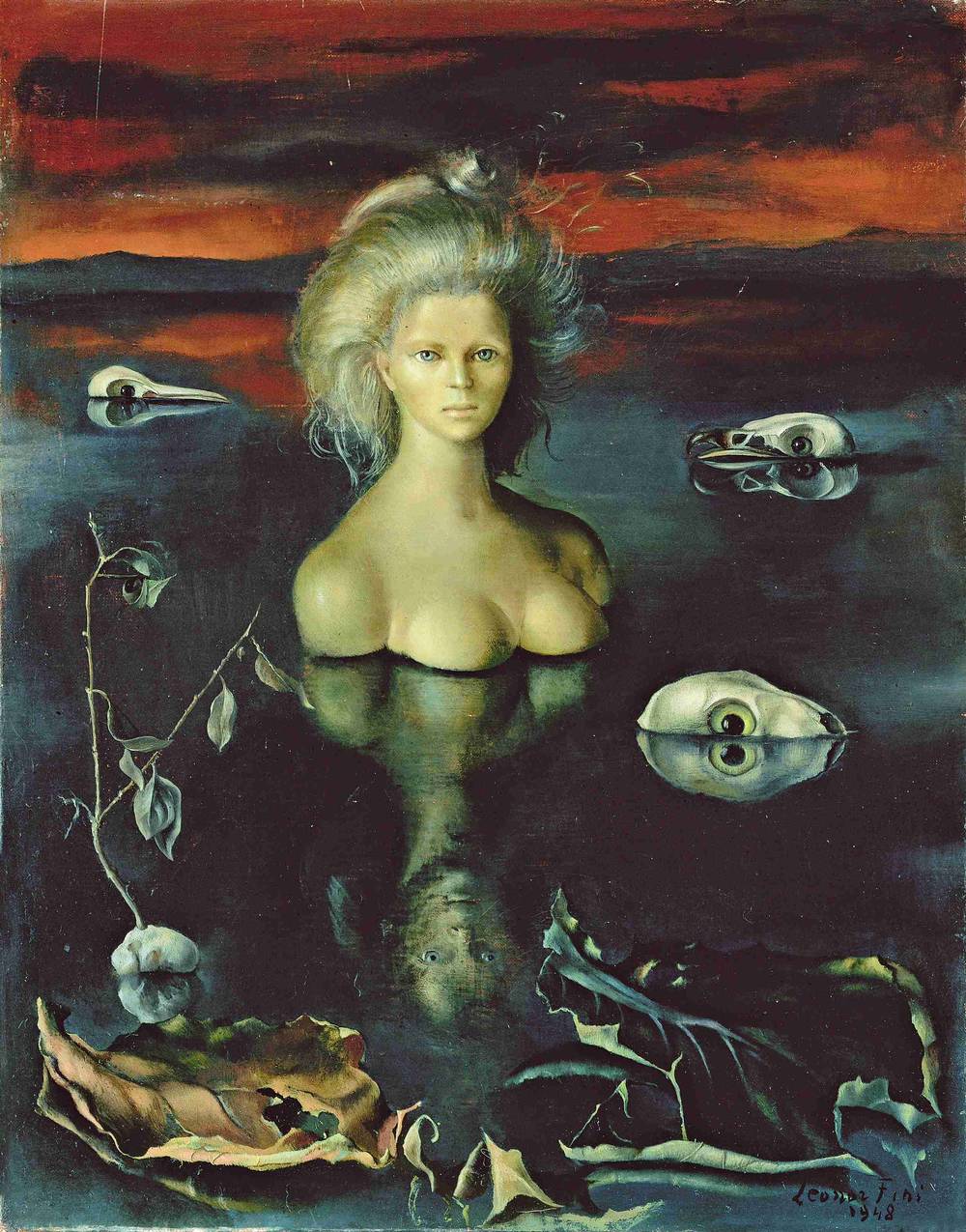
When she moved to Paris in 1931 in search of Surrealist art she happily found that she was better versed in the writings of Sigmund Freud, Franz Kafka and Friedrich Nietzsche than many others in that group of Surrealist artists. Merging various influences in her meticulous brush strokes, lavish palette and textures, with her interests in psychoanalysis, philosophy, mythology and sorcery, Fini’s focus on woman as a sensual and sexual creature – and often a cruel dominatrix or predator – led Surrealism in new directions.
Fini’s portrayals of women led surrealism in a new direction
In Fini’s early work “The Curious One” (1936), painted for her first show at the Julien Levy Gallery in New York, an elderly male spies on a tall female in pre-Raphaelite dress holding a riding crop. The door ensures the scene hovers between dream and nightmare while the viewer is drawn into an erotic drama in which he/she is a voyeur. This dynamic would come to dominate all of Fini’s canvases as she obsessively returned to the femme-fatale image, portraying women – including herself and female friends - with leonine hair, fin-du-siècle costumes, and a bold Medusa-like stare. In “The Shepherdess of the Sphinxes” (1941) the same female type is presented amongst a harem of sphinxes in an equally desolate landscape, but she is now wearing a skimpy metal armour which serves to lead the eye of the viewer to her sex and to the phallic staff she wields.
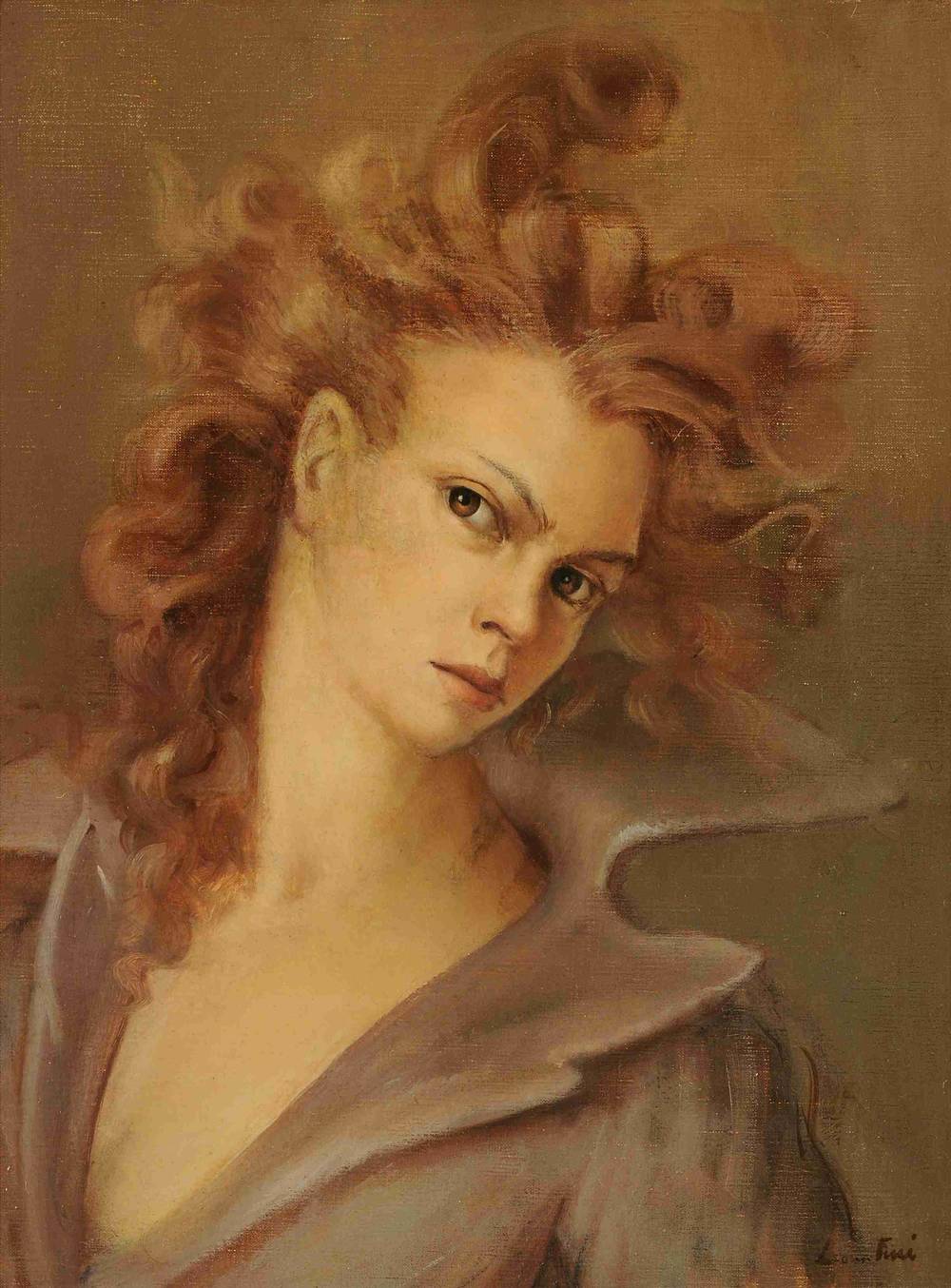
Male surrealists often turned to Greek mythology, notably the tale of Oedipus, so it is not surprising that Fini repeatedly portrayed the sphinx from the very same mythological tale. However, she differed from many of her male peers in staging the sphinx as all-powerful and the Oedipal male as a plaything for her fancy, as seen in some of her most famous works, notably “Chthonian Deity Watching over the Sleep of a Young Man” (1946) and “The Ends of the World” (1949) where skulls surround the sphinx.
In these paintings, Fini effectively reverses the traditional roles of man and woman as she stages the female as a heroic figure and the male as a beautiful, passive nude (modelled after her lover, the Italian Count Sforzino Sforza). Fini explained that the nude male was often asleep in her paintings as “men allow the duties of work, social life and war to anaesthetize them to the life of the spirit”. The sphinx dominates the wartime-paintings of Fini, allowing her to reverse traditional gender roles as well as to critique a society in which men are expected to be aggressive, and women to be passive.
[M]en allow the duties of work, social life and war to anaesthetize them to the life of the spirit.
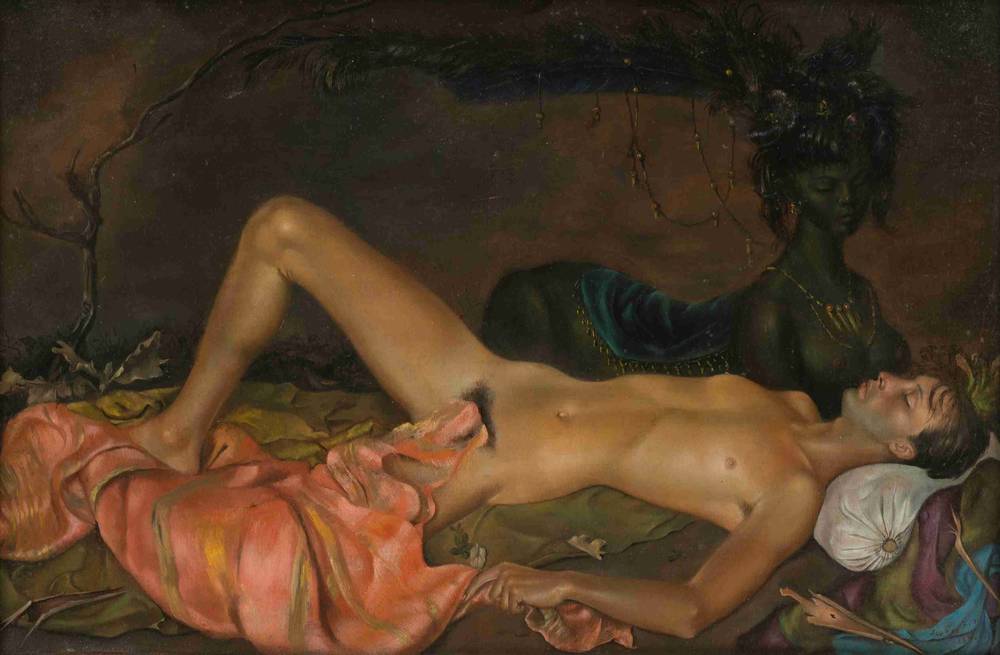
The sphinx – half woman half lioness – symbolized the fusion of masculine and feminine characteristics, the animus and the anima, and the vision of a less aggressive social order. Indeed, it was a creature Fini perceived as the perfect fusion of both sexes, and she identified with the sphinx as she felt she was “hybrid”, too.
Fini saw the Sphinx as the perfect fusion of both sexes
Accordingly, in paintings such as “Dans la Tour” (1952), she portrays herself in a sphinx-like manner, leading a nude male in a ruined architectural setting. As the color red symbolizes an alchemical path, Fini intimates the male will experience some form of initiation in this stone tower. It was painted while Fini and her two lovers, Stanislao Lèpri and Konstanty (Kot) Jeleński were staying in the Torre San Lorenzo in Italy. And indeed, the slim male resembles the thirty-year-old Jeleński whilst his initiator can be identified as Fini herself. In the 1950s Fini’s imagery shifted towards a focus on sorcery and death through priestess-like females, in red or golden robes, as in “Guardian with a Red Egg” (1955) and “The Victim is Queen” (1963). The symbol of the egg and the flame-like colors suggest the alchemical power of transformation, ascribing this power to woman.
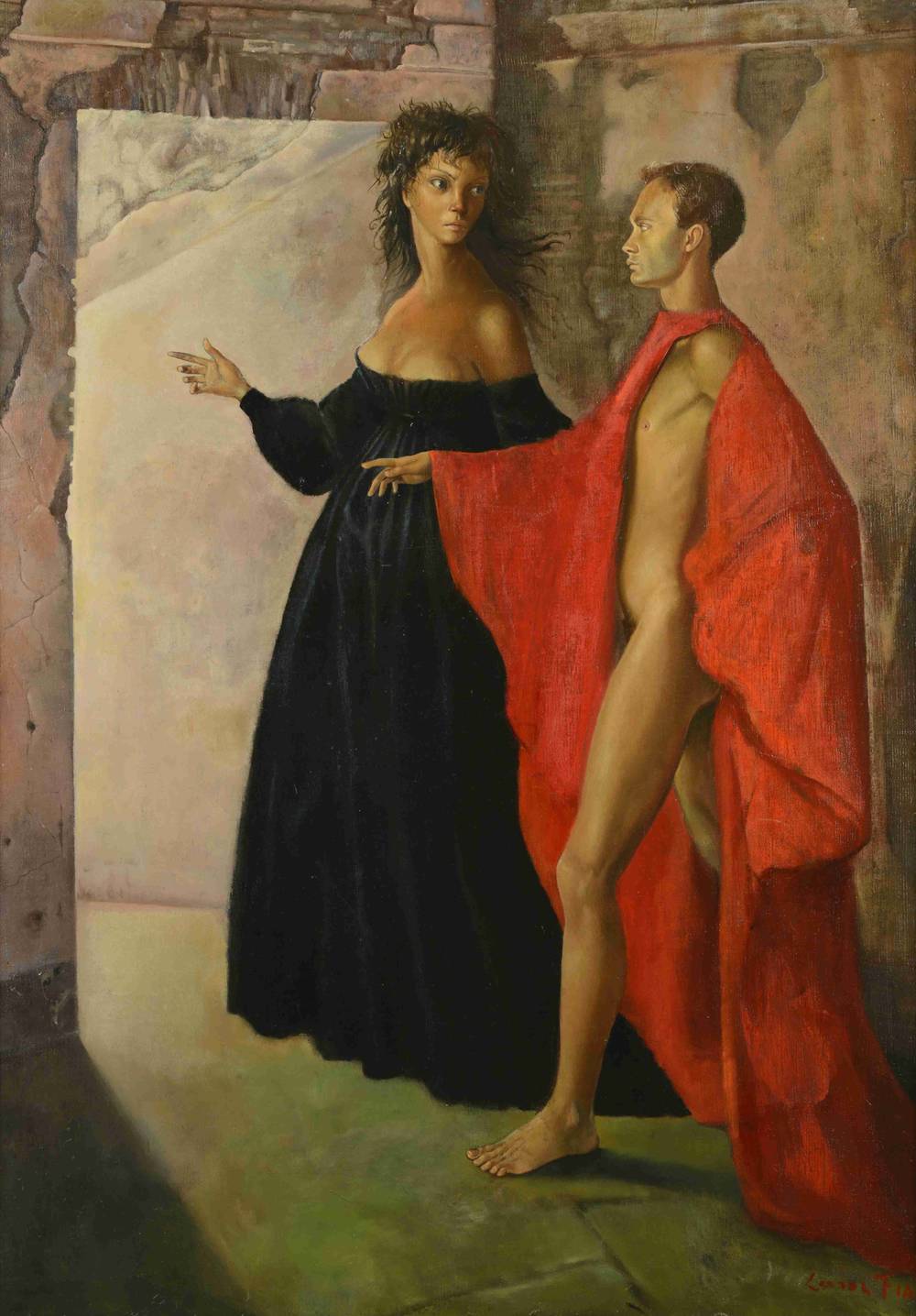
In endowing the female with the power over life and death, Fini again subverts the equation of woman with virtue, motherhood or obedience. She also admired the writings of the Marquis de Sade and in 1944 Fini produced twenty-two etchings for a luxury edition of Sade’s novel “Juliette”, first published in 1797, printed by the Vatican, as she liked to mischievously explain in several interviews.
Her works propagate a new, libertine type of women
Many of her works are informed by a Sadean “philosophy of the boudoir” promoting a new libertine female type, not unlike the one represented by the fierce Juliette. Whether staging woman as a hybrid goddess, medusa, libertine, or wise sphinx, Fini’s warrior-like heroines all preside over life and death. These “new women” go beyond the hierarchy of master and muse while reveling in the power of desire and fantasy. Leonor Fini called for what she termed “a world of non-differentiated, or little differentiated, sexes” in her art, and brought that vision of a universe reigned by women to Surrealism.
